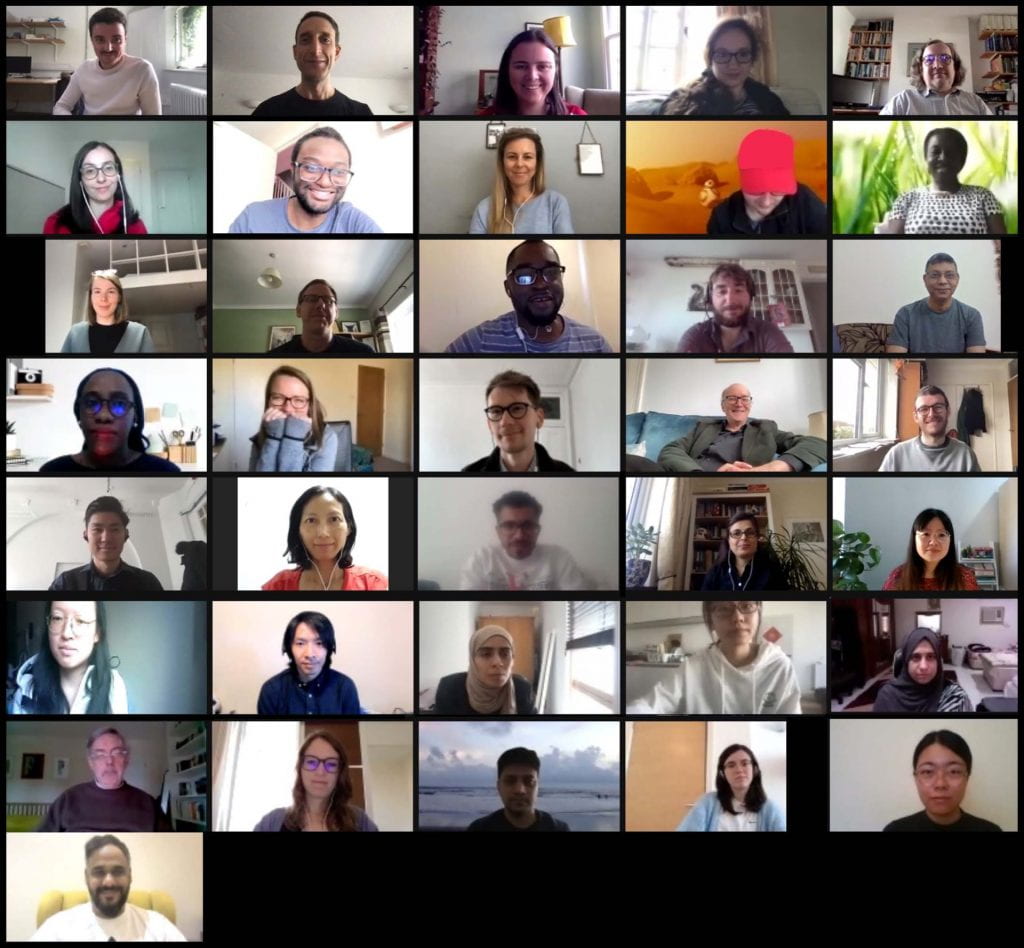Stop The Disaster! IRDR Spring Academy 2021
By Joshua Anthony, on 28 April 2021
This article is a summation of points and questions raised by members of the Institute for Disaster Risk Reduction at the 2021 Spring Academy.
The mid-afternoon sunshine passes through my east-facing window and strikes my laptop screen, where the faces of the Institute for Disaster for Risk Reduction shine back at me. It is not mid-afternoon for all: for some, they gather for the annual Spring Academy as the same sun straddles a different horizon. Due to coronavirus restrictions, we gather online, tuning in from around the globe, demonstrating the department’s widespread influence. Through activities organised by both the PhD students and research staff, we are here to engage with the diverse range of expertise in our department.
What can floods tell us about covid-19? Can the unsettling rise of water on the doorsteps of schools and hospitals inform the decisions we make during a pandemic? Using the UNDRR game, Stop the Disaster, as an illustrative tool, Qiushuang Shi and Rob Davis lead us through the process of emergency planning and management to answer these questions.
While some of us struggle to allocate funding for flood defences and deliberate over where to build the hospital in our virtual disaster village, one cannot help noticing the people that populate the little green boxes of grass next to the blue pixels of seawater. How would they respond to an early warning system, and would it work if it were a virus and not flood water knocking at their door?
Once the unfortunate villagers are subject to the 8-bit flood water, Rob and Qiushuang move us on to discuss what we have learnt. There is a consensus between us that communication is vital to affect successful disaster risk reduction—across all hazards. No early warning system or public health advice it worth it if the information is not widespread and consistent and the risks properly conveyed; or if there are significant economic, cultural, political or societal conditions—such as gender structures—that inhibit this process or adherence to it. Prior knowledge and experience of a hazard within a society (or lack thereof) is likely to alter the perception of, trust, and response to the message, not to mention the political will to support and fund emergency resources and planning initiatives, which could be assisted by media initiatives.
The visceral threat of quick onset hazards may put the screws on emergency fund release at showtime, but what of slower hazards for which there is ample time to plan? For some in the world, climate change is a distant reality, while for others it is an immediate threat. Uncertainty plays a key role in the way we respond to hazards—in scientific calculations (such as for early warning systems) or in individual perceptions and acceptance of risk.
We can see that, though the propagation and imagery of flood water and coronavirus—or any hazard, for that matter—may differ, there is an unavoidable factor underlying the multitude of research topics across the Institute of Risk and Disaster Reduction’s members: vulnerability. Indeed, the most contrarian of us posit that one could approach disaster risk reduction entirely from a vulnerability perspective. This notion hangs in the balance. We move on to the next stage of the session: multi- and cascading-hazard scenarios
There are places unfortunate enough to be subject to multi-hazard events. Even now, as we live through COVID-19, one member notes, the HIV and AIDs epidemic that gained notoriety in the 1980s still affects millions of people. As we have seen over the past year, floods, forest fires, earthquakes, disease outbreaks—you-name-it—do not rest for each other, and all the while the climate still changes. Mitigation, preparedness and response procedure efforts must consider multi-hazard scenarios, and not be subject to a “flavour-of-the-month” approach to disaster risk reduction. Critical infrastructure may be pliable up to a point and break beyond that threshold. Existing and dormant vulnerabilities may be triggered under cascading disaster scenarios—otherwise interpreted as cascading vulnerabilities—as seen in the infamous triple-front attack on Tohoku in 2011, which manifested in a combination of an earthquake, a tsunami and a nuclear meltdown. The complexities of multi- and cascading-hazard scenarios are vast; one must look for interconnected and parallel vulnerabilities that transect all hazards in order to tackle the challenges. The importance of transdisciplinary research and collaboration of individual expertise are highlighted further by these situations.
Even when two hazards do not strike in unison, emergency planners must consider the impacts of a prior hazard on material and human resources for the next one. Under a changing climate, goalposts shift; resource allocation and size may change, funding options may have to be reconsidered. An example of a way to make use of existing resources in a multi-hazard scenario is suggested in adapting training facilities for one type of hazard to accommodate multiple. As we consider the way planning and management needs are altered in response to multi-hazard and cascading scenarios, one asks a question that should follow all disasters: has the learning come through? In other words, are we more or less resilient now we have experienced the crisis? This is a question one can imagine asking as we optimistically search for a light at the end of the tunnel after over a year of COVID. The darkness associated with the proverbial tunnel is often oversimplified to a period of turmoil before the promise of the light, but one overlooks its poignancy in portraying the struggle that one experiences while operating within the shadow of uncertainty.
As we close the session, the faces of IRDR, hailing from a wide array of different disciplines, stare back expectedly at me for a summary of the session proceedings. Well, here they are. However, it’s made evident—as I scrabble to collate my mish-mash of notes—that one voice solely is not enough to tackle the challenges we attempt to understand here at the IRDR.
 Close
Close




